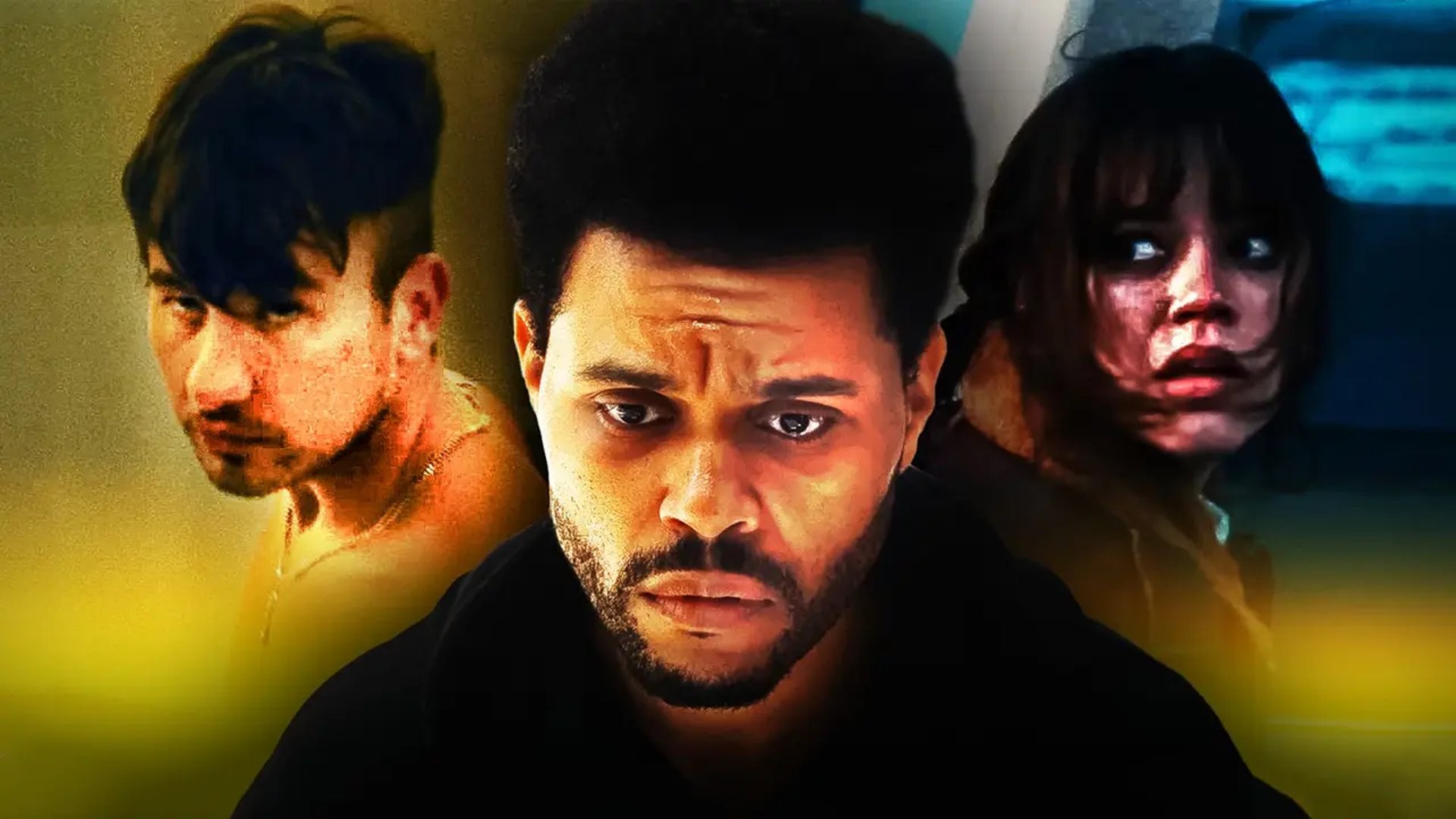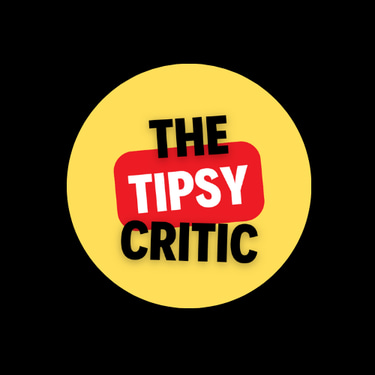“Your home for fearless film reviews, the latest entertainment news, and unfiltered movie rants.”
Hurry Up Tomorrow: The Deep Psychological Breakdown You Need to Know
The Tipsy Critic
5/17/2025

If you just finished watching Hurry Up Tomorrow and your brain is spinning, you’re not alone. This isn’t your typical movie. It’s a raw, unsettling trip into the mind of The Weeknd—Abel Tesfaye—who plays a version of himself wrestling with real-life trauma, mental health, and identity. But what does it really mean? What’s behind the cryptic imagery and surreal scenes? Let’s unpack this movie’s deep psychological layers and why it’s resonating with so many people who feel trapped inside their own minds.
The Movie as Abel Tesfaye’s Mental Landscape
First, understand this: Hurry Up Tomorrow is basically a window into Abel’s psyche during one of the darkest points in his life. It’s inspired by his actual experience losing his voice due to vocal cord damage and the crushing emotional weight he was carrying at the time—insomnia, heartbreak, anxiety. The movie turns these personal struggles into a dreamlike, sometimes nightmarish journey that blurs the line between reality and hallucination.
You’re not just watching a story unfold; you’re witnessing the fragmented, chaotic pieces of a mind trying to heal itself. And that’s why it feels so confusing but powerful.
The Jungian Breakdown: The Psyche’s Cast of Characters
If you’re into psychology, you’ll love this part. The movie isn’t just random weirdness — it’s loaded with Jungian archetypes, which are universal symbols that represent parts of the human psyche. Here’s a look at the three key characters and what they symbolize:
1. Anima — The Feminine Shadow Within (Jenna Ortega)
Jenna Ortega’s character isn’t just a love interest or random person. She is the anima, a concept from Carl Jung describing the unconscious feminine side in every man. She represents Abel’s vulnerable, emotional, and sensitive parts—everything he’s tried to suppress or avoid.
Anima forces Abel to confront his emotional wounds and toxic relationships with women. She’s at once seductive and terrifying because she embodies the feelings he’s scared to feel. Watching their interactions is like seeing Abel fight with his own soul—wanting connection but fearing it.
2. Lee — The Persona and Ego (Barry Keoghan)
Barry Keoghan’s Lee is the persona—the mask Abel wears to hide his true self from the world. This character pushes Abel to perform, to keep the facade alive, telling him he’s special and untouchable. But beneath that ego-driven exterior lies loneliness and self-destruction.
Lee is Abel’s conscious self trying desperately to maintain control, but the film shows how clinging to this persona leads to emptiness. The tension between Lee and Anima captures the classic battle between ego and deeper emotional truth.
3. The Shadow — The Dark Hidden Self (The Tunnel Scene)
One of the film’s most haunting moments is Abel’s descent into the pitch-black tunnel where he faces a terrifying feminine creature. This is a powerful representation of the Shadow, another Jungian archetype that holds the parts of ourselves we deny or hide—our fears, trauma, and impulses.
This scene taps into the fear and alienation many experience during moments of psychological breakdown or sleep paralysis, which brings us to the next major theme.
Sleep Paralysis: The Real Nightmare Behind the Movie
The nightmarish atmosphere of Hurry Up Tomorrow is directly inspired by Abel’s real battles with sleep paralysis—a terrifying state where you’re awake but can’t move, often seeing shadowy figures or feeling intense fear. The film’s blurred reality, hallucinations, and the sense of being trapped inside your own body all stem from this.
By translating the experience of sleep paralysis to the screen, the film lets viewers feel the vulnerability and terror Abel faced, while also showing the mental anguish beneath the surface.
The Four Stages of Transformation: Abel’s Journey to Healing
Carl Jung believed true psychological growth comes from embracing all parts of yourself through four steps: Confession, Elucidation, Education, and Transformation. Hurry Up Tomorrow traces Abel’s path through these stages:
Confession: Abel admits his pain—his voice loss and emotional breakdown.
Elucidation: Through Anima, he explores the roots of his trauma and toxic patterns.
Education: He confronts the shadow side and ego-driven illusions represented by Lee.
Transformation: The ending shows Abel reclaiming his voice and embracing his full self, finally breaking free from his inner torment.
Why This Movie Matters: It’s More Than The Weeknd’s Story
While deeply personal to Abel, Hurry Up Tomorrow taps into something universal: the struggle to accept ourselves, shadows and all, in a world that demands perfection and control. It exposes the masks we wear and the pain we bury inside.
For anyone who’s ever felt trapped in their own mind, battling anxiety, trauma, or identity crisis, this movie is a brutal but honest mirror. It’s a call to confront your demons and find peace by embracing the whole messy, beautiful self.
What to Watch For on a Second Viewing
If this movie left you with questions or a lingering sense of unease, rewatch with these in mind:
Notice how Anima’s presence shifts throughout the film — she’s not just a person but an emotional barometer.
Pay attention to the contrast between Lee’s charismatic confidence and the underlying desperation.
The tunnel scene is your key to understanding the psychological and spiritual rebirth Abel undergoes.
Listen closely to the music and lyrics—they’re more than soundtrack; they narrate his inner state.
Final Thoughts: A Haunting Portrait of Mental Health and Identity
Hurry Up Tomorrow isn’t just a film—it’s an immersive experience into the complexity of mental health, identity, and the human psyche. Abel Tesfaye has given us an unfiltered glimpse at his darkness, using cinematic language to share a story that’s both intimate and universal.
If you’ve been searching for answers after watching this movie, you’re exactly where you need to be. The real journey starts with acknowledging your own anima, persona, and shadow—and learning to live whole.
Keywords to help you find this breakdown:
Hurry Up Tomorrow psychological breakdown, Hurry Up Tomorrow Jungian analysis, The Weeknd movie explained, Hurry Up Tomorrow sleep paralysis meaning, Abel Tesfaye mental health film, Hurry Up Tomorrow movie symbolism, Hurry Up Tomorrow tunnel scene meaning, Hurry Up Tomorrow Anima persona shadow.
➡️ Read more movie and TV industry breakdowns at The Tipsy Critic
📲 Follow @thetipsycriticreview for real takes, no fluff.

As an Amazon Associate, I earn from qualifying purchases.
